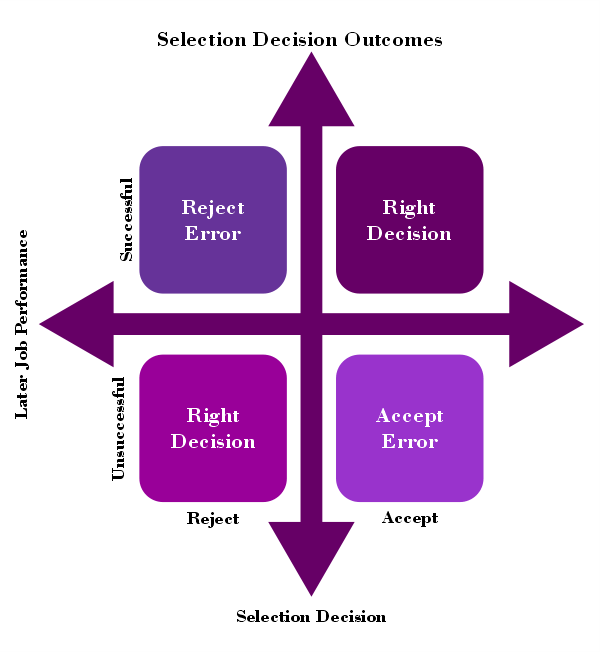Selection DefinitionOverview of SelectionFinding and selecting the most qualified applicant for a job opening is a critical step in the employment process. It is a systematic procedure that enables businesses to make sure they employ the best candidates with the qualifications, training, and experience required to satisfy the demands of the position. Various techniques and methods are used during the selection process to evaluate applicant's suitability for the position and their compatibility with the company. The purpose of selection, its significance in recruitment, and the numerous steps involved in the selection process are all thoroughly explained in this article. 
Understanding Selection MeaningSelecting the most eligible applicant from a pool falls under the selection definition. It is an important part of the hiring process that entails several steps to find the most qualified applicant for a job. Candidates who fulfil the minimal requirements for the position submit job applications to start the selection process. The applications will then be screened to see which applicants fulfil the requirements for the position. Reviewing resumes, cover letters, and other application materials is a normal part of the screening procedure. The most qualified applicants are chosen following the initial screening for further evaluation, which may involve exams, interviews, and other evaluation techniques. These evaluations aim to find the candidate who is the best fit for the position and the company. Because hiring the incorrect person can be expensive and disruptive, the selection is an essential procedure for any organization. A good hiring choice can harm positive culture, reduce productivity, and increase turnover. The selection procedure must be thorough and well-planned to determine the best candidate. Why Selection is Important in HiringIt is impossible to overstate the significance of selection in employment. A company's success depends on choosing the best candidate because it directly impacts the calibre of the workforce, productivity, and overall performance. The following are some of the main justifications for why employment selection is crucial: Workforce QualityThe selection process allows employers to find and employ candidates with the necessary training, expertise, and experience. Organizations can ensure that their workforce is knowledgeable and capable of carrying out their responsibilities by making the correct hiring decisions. 
Increased ProductivityFinding the correct candidate can increase effectiveness and productivity. A carefully chosen employee is likelier to perform well, achieve goals, and produce high-quality work, increasing productivity. Cost SavingsMaking the correct hiring decision can help a company cut costs on hiring, onboarding, and training. A company can save money by hiring a candidate with less supervision and training. Reduced TurnoverThe selection process aids businesses in locating applicants who are compatible with both the mindset and requirements of the position. Because well-suited workers are more likely to work for the company long-term, this can result in lower turnover rates. Enhanced Organizational CultureEnhancing the organizational culture can result in greater employee involvement and retention. Organizations can create a productive workplace that promotes collaboration, creativity, and high performance by choosing applicants who share the organization's values and culture. In summary, selection is a crucial part of the recruitment process that can substantially impact an organization's performance. Organizations can build a knowledgeable and motivated workforce that adds to their success by choosing the right candidate. Procedures for the Selection ProcessThe selection procedure typically consists of several steps to locate and pick the best applicant for a job opening. Different steps may be involved in the selection process depending on the company's size, type, and requirements. However, the typical steps that the majority of organizations use in their selection procedure are listed below: Conducting a Job AnalysisIt is the first stage in the selection procedure. This entails outlining the job's obligations, duties, and prerequisites. 
Finding CandidatesFinding candidates is the next stage. This can be done through various avenues, including social media, employee referrals, online job boards, and recruitment firms. Examining CVs and ApplicationsThe resumes and applications submitted by candidates are evaluated to see if they fulfil the requirements for the position. This entails evaluating their training, professional expertise, and other pertinent credentials. Interviewing CandidatesThe most eligible applicants are contacted for interviews after reviewing the applications. A group of interviewers or a one-on-one meeting with the hiring manager may be part of the interview process. Typical Selection MethodsOrganizations may use various selection methods depending on the nature of the position, the culture of the company, and the resources available for the selection process. However, organizations employ several standard selection methods to gauge applicants' potential for open positions. Some of the most popular picking methods are listed below: InterviewsOne of the most popular choosing methods is the interview. In-person or virtual interviews can be done, and they can be structured or unstructured. Unstructured interviews are more flexible and informal, while structured interviews are more standardized and have predetermined queries. TestsTests evaluate candidates' skills, knowledge, and abilities pertinent to the work. Recruitment frequently uses cognitive aptitude, personality, and skills tests. Assessment CentresAn in-depth assessment of a candidate's talents, knowledge, and skills is conducted at an assessment centre. This method includes a variety of assessments, such as simulations, exams, and interviews. Background checks and references confirm a candidate's job history, criminal history, and other pertinent information. Work SamplesWork samples assess a candidate's aptitude for carrying out duties connected to the position. This method entails giving applicants a task or project similar to what they will do at work. 
Behavioural ObservationBehavioural observation is watching a candidate's behaviour in a particular circumstance, such as during a role-playing exercise or group activity. The candidate's interpersonal and communication abilities are assessed using this method. Work ExpertiseOne of the most important selection criteria is work expertise. Analysing a candidate's prior employment reveals information about their abilities and skills relevant to the position. In conclusion, organizations may use various selection techniques based on the nature of the position, the culture of the company, and the resources at their disposal. Organizations can make sure they pick the best applicant for a job opening by combining several selection techniques. Selection Factors that Consider Law and EthicsOrganizations must know the ethical and legal issues when choosing applicants for open positions. Failure to adhere to these factors may expose a company to liability and harm its reputation and employees. Some of the ethical and legal factors that groups should take into account when making selections are listed below: Anti-Discrimination LawsBusinesses must abide by anti-discrimination laws, which forbid discriminating against applicants based on race, colour, religion, gender, age, or any other protected trait. The qualifications, abilities, and skills of a candidate should be taken into consideration when making a hiring choice. Privacy lawsWhen collecting, using, and disclosing candidates' personal information, organizations must respect their right to privacy and acquire their permission. Only for the hiring procedure should personal information be gathered, and it should be kept private. FairnessAll candidates should be evaluated using the same selection factors, and the process should be transparent and fair. All applicants should be given equal chances, and the selection process should only consider factors relevant to the position. Validity and ReliabilityThe employed selection techniques must be valid and reliable. That is, they must successfully predict work performance and yield repeatable outcomes. Research- and best-practices-backed picking methods should be used by organizations. AccommodationsTo guarantee that candidates with disabilities can completely participate in the selection process, organizations must make reasonable accommodations. Providing assistive technology or alterations to the choice procedure are examples of accommodations. Background ChecksOnly job-related background checks should be performed, and applicants should be made aware of the nature and extent of the checks. Background investigations should adhere to all relevant legal requirements. Ethical RamificationsOrganizations must consider the ethical ramifications of their selection choices to ensure their selection procedure is considerate, impartial, and equitable. Additionally, they should refrain from preying on candidates' weaknesses by conducting interviews in which they pose inappropriate or irrelevant questions. 
In conclusion, the selection procedure heavily weighs legal and ethical issues. Companies must follow anti-discrimination and privacy laws, ensure the fairness, validity, and dependability of their selection procedures, provide accommodations, perform background checks only when necessary for the job, and consider the moral implications of their selection choices. Problems with SelectionDuring the selection procedure, organizations may encounter several difficulties. Some of the typical difficulties include:
Careful preparation and consideration of these difficulties are necessary for effective selection. Organizations can improve their chances of finding qualified applicants who are a good match for the position and the company by addressing these issues. Monitoring and Evaluating the Selection ProcessEvaluation and monitoring are crucial to ensure the efficient selection process meets the organization's requirements. Here are some methods for assessing and keeping an eye on the choosing process: Gather Applicant FeedbackCandidates can comment on their selection process experience. This can assist organizations in identifying problem areas and implementing the required adjustments. Monitor Key Performance Indicators (KPIs)To gauge the success of their hiring process, organizations can monitor KPIs like time to recruit, cost per hire, and retention rates. Conduct Internal AuditsBy regularly identifying bias, discrimination, and other problems in the selection process, companies can take the required corrective action. Analyse the relationship between the results of the selection process and work performance to assess the efficacy of the selection methods used by your organization. Regularly reviewing their selection procedures ensures that they adhere to legal and regulatory requirements, such as equal employment opportunity legislation. Utilize BenchmarkingTo find areas for improvement, organizations can compare their selection procedures to best practices in the business. Review and Update the Selection CriteriaTo keep the selection criteria current and useful, they should be examined frequently. Organizations can find areas for improvement and implement the necessary changes by evaluating and monitoring the selection process to ensure they choose the best candidates for their organization. Future Directions of the Selection ProcessHere are a few potential selection procedure trends for the future: AIAI can be used to automate and streamline the choosing procedure. The workload of recruiters can be decreased, for instance, by using AI-powered chatbots to pre-screen applicants and respond to their inquiries. Virtual reality (VR)By simulating workplaces, VR can evaluate applicants' skills and abilities. This can offer a more accurate evaluation of applicants' credentials and suitability for the position. It is possible to assess candidate data and forecast their chances of landing a position using predictive analytics. This can assist employers in making wiser employment choices. Emphasis on soft skillsIn the workplace, soft skills like communication, collaboration, and adaptability are becoming increasingly crucial. Assessing these skills may receive more attention during the hiring procedure. Diversity, Equity, and Inclusion (DEI)With a focus on lowering bias and boosting representation of underrepresented groups, the selection process may put a greater emphasis on diversity, equity, and inclusion. 
Virtual HiringDue to the COVID-19 pandemic, more companies are now performing interviews and assessments online. Due to this tendency, virtual hiring will likely increase in popularity. GamificationTo make interesting and interactive assessments that gauge candidates' skills and abilities, use gamification. As a result, applicants may have a more positive and successful assessment experience. As businesses adopt cutting-edge techniques and technologies to enhance the calibre of their hiring choices, these trends will likely influence the selection process's future. The Function of Choosing in Managing Human ResourcesIn the administration of human resources, the selection is essential. It entails locating and selecting the top applicants for open positions based on their abilities, credentials, and expertise. Effective selection guarantees businesses have a skilled and diverse staff to support their objectives. The following are some crucial functions that selection performs in human resource management: Job DescriptionFinding the qualifications, skills, and experience required for a job position is the first step in the selection procedure. To draw in the best candidates, HR managers must clearly grasp the job description. Recruiting Qualified CandidatesAfter determining the job criteria, HR managers must create job descriptions and promote the position to attract the right applicants. This might entail utilizing various platforms, including employment boards, social media, and employee referrals. Candidates are evaluated during the selection process using various selection techniques, including exams, assessments, and interviews. HR managers must confirm the validity and dependability of the techniques. HR managers must make hiring choices that are impartial, consistent with organizational policies, and fair based on the evaluation results. Onboarding New EmployeesFollowing a hire, HR managers must assist new hires in settling into their positions by offering them support, orientation, and training. Developing a skilled and diverse workforce that can propel corporate success requires effective selection.
Next TopicStrategic Management Definition
|
 For Videos Join Our Youtube Channel: Join Now
For Videos Join Our Youtube Channel: Join Now
Feedback
- Send your Feedback to [email protected]
Help Others, Please Share










